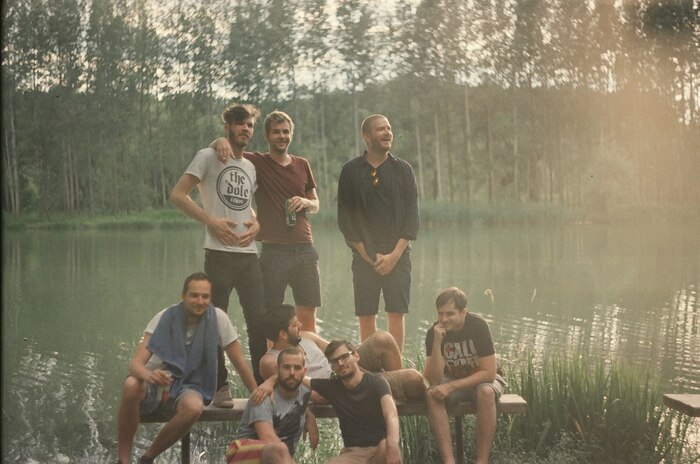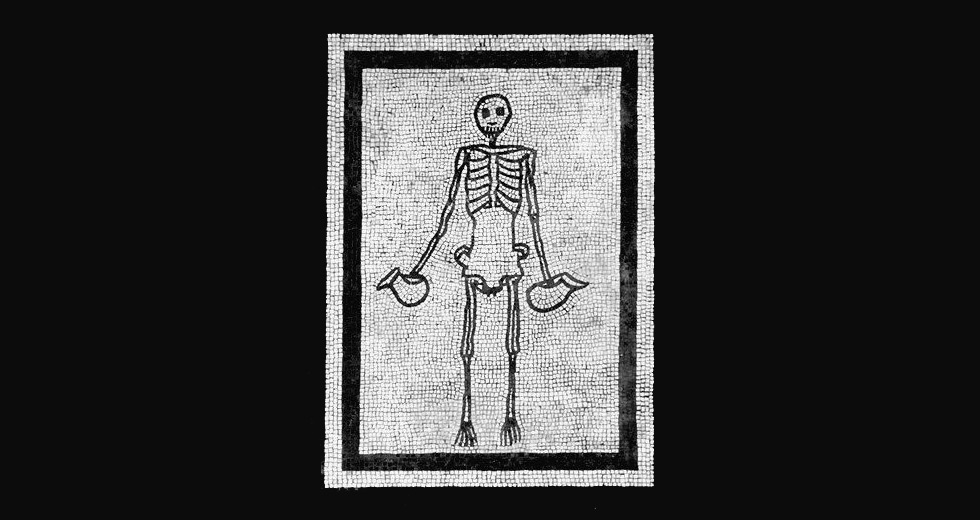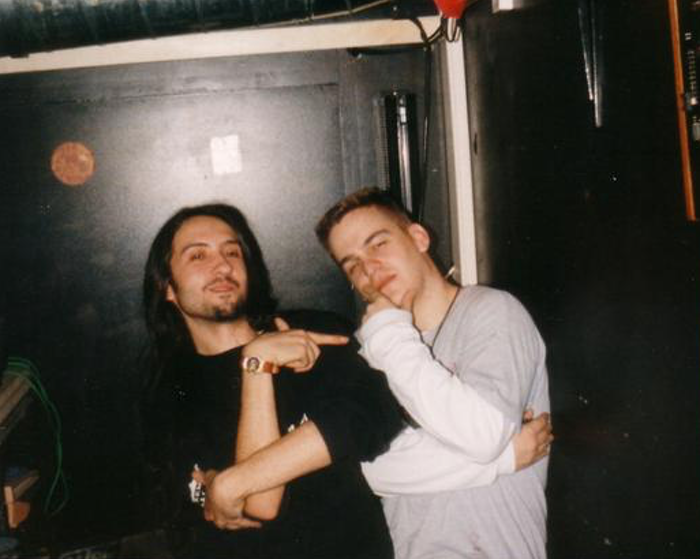Farbwechsel: Making DIY Techno in Budapest
Jake Hulyer investigates the Hungarian capital’s post-liberation techno scene

There can be difficulties in building a creative culture after years of repression. For Budapest-based label Farbwechsel, Hungary’s 45-year Soviet occupation is a fact they grapple with as much as any of the country’s other cultural entities. Over 20 years after Hungarian liberation, the effects of decades-long isolation still have a bearing on what they and other artists in Budapest do. Though both Berlin and Budapest were on the eastern side of the Iron Curtain – the real and imagined border of post-World War II Europe, which divided Soviet-controlled states and the West – releasing electronic music is a different prospect in the Hungarian capital than in the German one.
When the Soviet Union collapsed in 1991, house and techno music were expanding into myriad strains of dance culture, and in pockets of the U.S. and Europe. But despite Germany being a short train ride away, a nascent rave culture wasn’t quick to migrate across Hungary’s newly open borders in the way that it flooded into East Berlin. With clubs and record shops slow to catch on, the formative, less tribal early years of dance music in Hungary were a second-hand experience for most.
In 2014, London’s then-fledgling Lobster Theremin label brought the first major outside attention to Hungarian techno music, via the Farbwechsel label. A series of its early releases – 12-inches by S Olbricht, Route 8 and Imre Kiss – were tied together with early characteristics: submerged kick drums, coarse arpeggios in muddy textures. It was music mediated by distortion, machine refrains buried in tape-hiss. The three releases were from key Farbwechsel members, and releases elsewhere – on Opal Tapes for Olbricht and Nous for Route 8 – soon followed. This shone a light on the individuals and their home territory, and kick-started connections with like-minded labels elsewhere. It’s found them releasing on and signing artists from a handful of labels dotted around Europe and North America. For the friends who remain at the label’s core, these connections add weight to their texturally-minded techno and place them in an interconnected global context.
The founders – Norwell, Alpár, SVR and S Olbricht – are huddled around a laptop in Olbricht’s flat, alongside regulars Imre Kiss and A i w A. Despite this awkward set-up, a close-knit atmosphere prevails. Alpár and Norwell are childhood friends from the same village, Norwell met Imre when visiting London (while the latter was living there a few years ago), and the rest crossed paths at gigs in Budapest. The city’s size means that events like Olbricht’s first show, where he and A i w A met, tend to see a lot of the same faces. Aside from SVR, who doesn’t produce, they share a one-take, lo-fi attitude to recording music, shaped by a preference for analogue synths.
They talk about how they’ve often found inspiration outside Budapest. The record shop Deep has been a reliable importer of the drum and bass and techno which they started consuming in earlier years. And though there was a club scene when they were growing up, the sleeker, more polished iterations of the sound – “more regular techno,” laughs Alpár – have long been the norm. With Farbwechsel, contrast can be a source of inspiration. They spent their early years at drum and bass parties, and experienced a clean-cut production approach that’s a contrast to the thick fug of their own work today. Their newly launched club night Crisis is indicative of their interest in club music’s rougher edges, too: playing U.K.-centric, bass-weighted sound, like jungle and grime.
As the ’90s drew to a close, the lure of visiting the newly ex-Soviet state – “to have an adventure on the other side of Europe,” as Nun puts it – began to dwindle as its novelty wore off for touring acts. “That,” he says, “was when we came in.”
Their current output is split between vinyl and tape releases. The lo-fi connotations of the cassette remain a relevant way to frame their sound and aesthetic for their peers. London’s Reckno and Opal Tapes are two kindred spirits: tape labels releasing music on dance music’s more experimental fringes. Reckno released an album by co-founder Norwell and an EP by Morkebla, who’s since found a home on Farbwechsel, while Opal Tapes has been a regular home for Olbricht’s material. Slovakia’s Proto Sites, Canada’s Shabu and L.A.’s 100% Silk have also put out releases by members of the crew.
That connection to Amanda Brown’s 100% Silk might be small, and their output less prolific, but there are similarities with her indie slant on club music. Imre talks about how there “wasn’t a lo-fi, DIY scene in Budapest” before Farbwechsel started out. Techno clubs like Mono catered to more of a polished sound, while – with exceptions like the breaks-led Chi imprint cited by A i w A – their taste for noise and imperfection set them apart from others in Budapest. And it’s the tape-oriented, home listening side of the label, like Imre Kiss’ mostly beatless 2013 debut, Midnight Wave, that’s led them to be booked as live acts more than as DJs.
One of these bookings is the week-long Ultrahang festival, which is part of the International Cities of Sound Network (ICAS). With a healthy portion of local acts, Ultrahang operates as the Hungarian version of CTM and Unsound. Now in its 15th year, Ultrahang has slowly opened up more space for electronic and avant-garde musicians in the city. “Because we were cut off from the cultural flow for 30 or 40 years, there’s definitely a different climate for music. Different music wasn’t played on the radio, there weren’t popular clubs,” explains Ultrahang’s András Nun.
The limits on cultural activity under the Soviet regime were keenly felt. It’s telling that two of Hungary’s most famous musical exports of the 20th Century – György Ligeti and György Kurtág, modern classical composers who spent their formative years in Budapest – made their names working in Vienna or Paris. A lot of bands, intrigued by the prospect of experiencing the newly liberated nation, toured there in the years shortly afterwards. Mostly punk or rock bands from Europe and America, like Sabot and Kong, they were booked to play in an atmosphere where previously repressed networks of counterculture had come to the fore. Emerging from a generation for which making or consuming music had been so restricted was a dramatic shift. “It was the turn of these movements. They could really shape – in the cities at least – the cultural landscape,” Nun recalls.
But as the ’90s drew to a close, the lure of visiting the newly ex-Soviet state – “to have an adventure on the other side of Europe,” as Nun puts it – began to dwindle as its novelty wore off for touring acts. “That,” he says, “was when we came in.” Ultrahang started out as a two day affair and has since grown to nine days. It’s expanded with the inner city venues, opening up alternative music culture beyond the punk and rock circles that were previously the city’s mainstay. Avant-garde and noise acts are now Ultrahang’s focus, with Nun emphasising that a bias toward electronic music is due in part to the economic reality of booking live ensembles. “Electronic music is revolutionary because it allows for one man shows, in a good sense. In a different genre, those four or five people would consist of a band, which isn’t really enough for a day program.”
The legacy of Soviet-era, state-controlled cultural activity – where restrictions applied to the music being made abroad, as well as the avenues available for performing or making music locally – has left a gap that’s made people more receptive to new sounds now. “There are pros and cons to being isolated for decades. It means that many things are interesting for people here,” Nun says. “You couldn’t hear interesting music from your mother or father because they were listening to crap. Here it’s a much smaller audience, but it means that people are often more curious and attentive than Western crowds.” It’s complemented by newer upstarts in the city like Electrify – another regular host of the Farbwechsel crew – who book foreign acts like William Basinski and Vessel for their shows which they program throughout the year.
One of the positives of a music scene that’s spread more thinly, too, is the impetus to collaborate. According to Nun, a culture that’s “not as ghettoised as it used to be” sees people increasingly open to working together. “Years ago, there were exclusive places to hear different genres. Metal, hardcore, different breeds of techno, Goa, experimental - and then the Saturday Night Fever-style places, with shallow dance music. There was hardly any crossover between the audiences. Now, we have newer generations that are more open to otherness in art – music, too. Being open to other things is more like a value by now.”
He cites the city’s improvisational scene – at bi-monthly get togethers like Jazzaj (“jaz” meaning “jazz,” “zaj” meaning noise) or at small cafes like Lumen and Kisüzem – as a good example. Two of the Ultrahang’s venues on the more danceable end of the live spectrum are Toldi and Lärm. Opened in 2012 and 2014, respectively, the former hosts an across-the-board program of club nights in a state-run cinema, while the latter is a purpose-built club focused on techno. The commonality between the two is Csete Manek Gábor. After joining friends in the running and programming of Toldi, he took on the chance to build a space beneath one of the city’s ruin pubs.
Though Toldi is tied down by more restrictions, owing to its larger size and the fact it’s still state-owned (meaning pressure to draw large crowds and answer to the government body overseeing them), both differ from the city’s ruin pubs in an important way. Rather than being geared toward tourists, their focus is on the music and local crowd. These ruin pubs are large, courtyard bars in old buildings, which have grown in popularity since the mid-2000s. There are disagreements as to how much they’ve sucked the life out of nightlife elsewhere, but it’s undoubtedly the case that music and DJs there are little more than interchangeable background noise.
The philosophy behind Lärm is driven by this. “I wanted to create a space where the music is the only reason you go,” says Gábor. Opened beneath one of the city’s larger ruin pubs, Fogasház, it takes loose inspiration from the Mono club, which was created with a singular focus on the music. One of its regular hosts is Bounce. Started in 2010 by promoters with backgrounds in hip hop and jazz, it was set up as a platform for footwork and dubstep but has since shifted toward house and techno. Operating in a similar vein to nights like Lick the Click, Girls and Maths, they top bills with touring house and techno acts like Lowtec and Aurora Halal, bolstered by local DJs as support acts.
“If you have spaces to show yourself to the audience on a good system,” says Gábor, “you’re going to be motivated to produce or buy records.” As Bounce co-founder Milan Vacz observes, “It’s had a big role in showing people an alternative way of enjoying the techno mentality.” A mentality often associated with nightspots in Berlin, it’s a serious, head-nodding mindset that matches the spartan decor of the club.
Farbwechsel sit somewhere between Lärm’s darkened walls and the live experimentalism of Ultrahang. Both are attracting local attendees and musicians in a city bulging with tourists, as well as constructing a DIY musical infrastructure. The regular, like-minded communities that attend both are vital to propping up this infrastructure, as new connections abroad are forged. In the ICAS network and the EU’s SHAPE initiative, Ultrahang can push for festival slots for Hungarian acts abroad. In Lärm, having a stable, open-minded crowd offers freedom to experiment for local promoters and DJs. Surveying the networks being forged inside the city and out, Nun enthuses, “Budapest is doing really well. It can be theatre, literature or music, you name it – it’s about connecting projects that are driven by open-minded people. It’s through these collaborations that you build up communities.”

